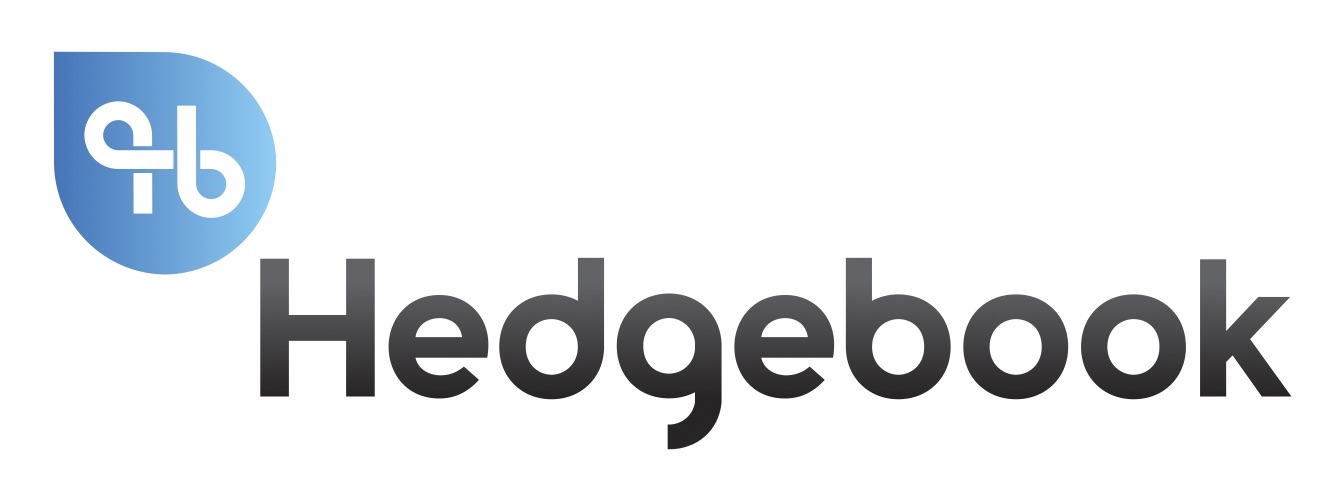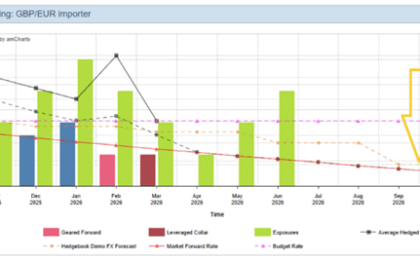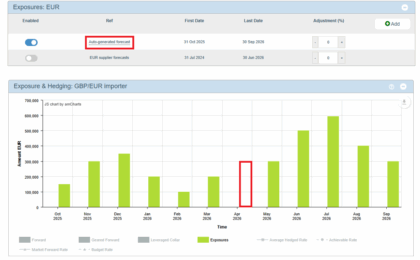Corporate treasurers face increasingly complex FX environments; volatile markets, regulatory scrutiny, and multiple operational currencies. But some banks are now stepping up in offering innovative tools and analytics, alongside their deep financial market knowledge to help transform managing Foreign Exchange risk from being a spreadsheet headache into a strategic advantage.
So what change is occurring and what can you expect?
1. Client‑centric, proactive FX services
Combining real‑time analytics and machine learning, banks are evolving into proactive partners – not just the transaction facilitators of old. Treasurers can now expect to benefit from:
- Alerts on unexpected FX activity
- Bespoke scenario simulations aligned with budgeting cycles
- Currency-specific strategy suggestions, backed by data rather than intuition
The aim is to empower more effective collaboration with an FX data‑powered dealing room within the banking environment.
2. Interactive FX scenario modelling
Banks are no longer restricted to simply executing trades. Through interactive platforms they can now:
- Centralise FX positions across all counterparties
- Provide valuation-compliant reporting with a few clicks
- Analyse P&L impact of future FX rate scenarios
- Run simulations against current hedging levels and alternative trade idea strategies
This means you can stress-test your exposure (“What if the USD/GBP moves by 5%?”) and explore trade ideas before execution – all within your bank’s portal.
3. Automated, audit‑ready FX portfolio reporting
The burden of audit‑grade FX reporting is heavy and rather than adding to it, banks are proactively working to ease it. This includes automating the upload of bank‑executed FX forwards and options and the calculation of mark‑to‑market valuations. They should also be able to provide standardised reports compliant with auditing standards that take away the need for manual spreadsheets and create a far more polished reporting document for stakeholders.
4. Data‑driven FX insights
Finally, it is good to see banks finally moving beyond the automation hype and embedding analytics directly into the FX workflow. Some examples of this include:
- Using AI chatbots to support simple queries and transactions (though full automation remains early‑stage due to regulatory risks)
- Providing big data platforms to let treasurers load real cash flows and simulate potential P&L outcomes. These insights allow for clear, collaborative strategy planning
- Advanced analytics using market and transaction history so you can identify trading patterns. This includes predicting when you’ll likely trade, volume expectations, and alerting you if your behaviour changes.
What does this mean for corporates managing foreign exchange risk?
Bottom line – banks are in a position to provide far better support for clients who are trading FX currencies and stay within the parameters of banking regulations. In accessing these digital FX risk management capabilities, corporate treasurers should be able to gain clarity, confidence, audit-ready documentation, and strategic support in managing their FX portfolios.
If you’re not aware of what support your bank provides – maybe its time to ask.
For a real-world example – take a look at how Hedgebook works with Absa Bank.





